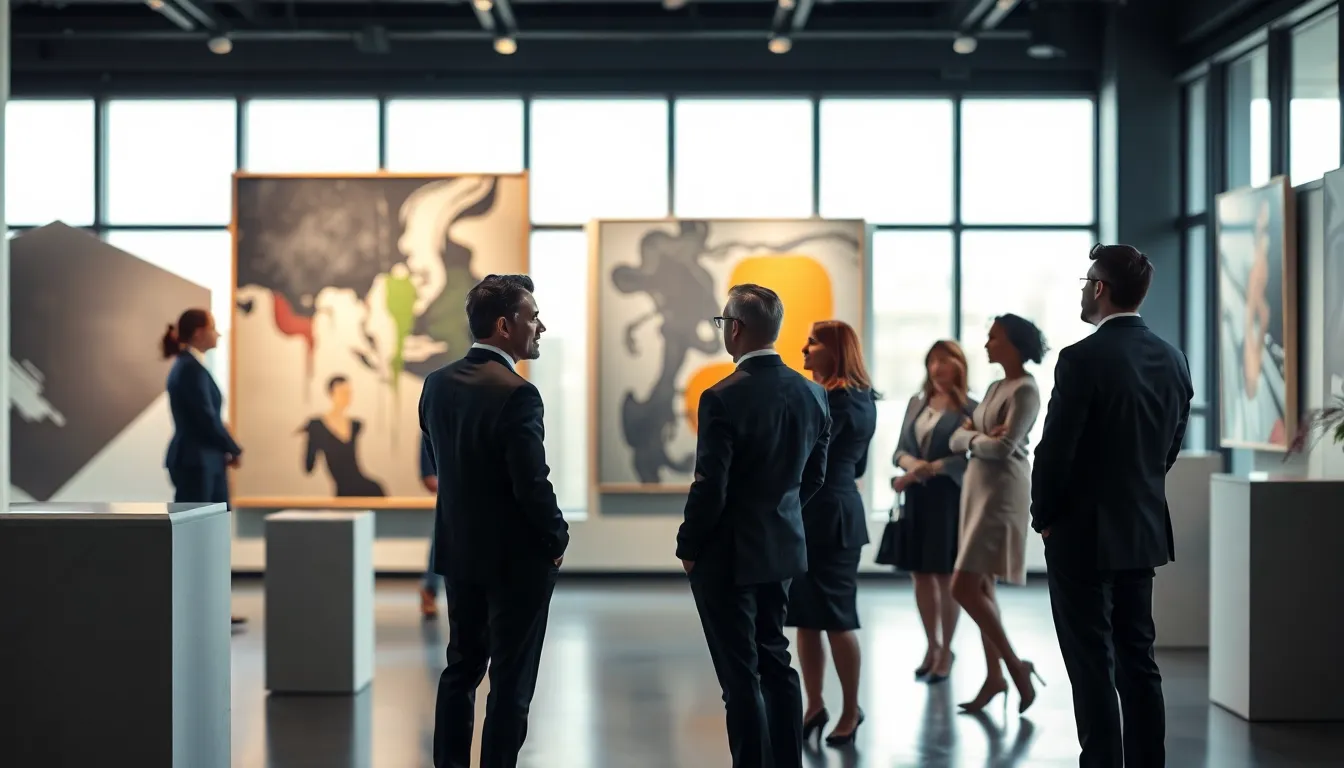Imagine strolling through a gallery, admiring vibrant splashes of paint and abstract forms, absolutely certain you’re in the presence of genius. What if those masterpieces were just clever disguises for something far more sinister than creativity? Welcome to the world of modern art money laundering, where canvas meets currency in a dance that might have more to do with illicit funds than artistic expression. Buckle up: it’s about to get colorful.
Table of Contents
ToggleUnderstanding Money Laundering in the Art World

Money laundering presents itself as a process that transforms dirty money into clean money. The art world, with its ever-inflating values and subjective pricing, naturally becomes a prime target for those looking to hide their financial tracks. In essence, it’s about obscuring the origins of illicit funds through a series of intricate transactions. For a buyer, purchasing a painting worth millions may simply be a way to invest: for a seller, it could be an opportunity to launder funds without raising eyebrows.
Surprisingly, art transactions often occur outside the purview of stricter financial regulations. With no formal monitoring in place and sheer values manipulated by personal connections and market trends, the art market can serve as an unregulated playground for money launderers. As ludicrous as it may seem, an exorbitant price tag attached to a seemingly banal piece of art can provide an elegant cover-up for financial misdeeds.
The Mechanics of Money Laundering Through Art
So how does this all work? Let’s break it down. Typically, the process initiates with a criminal purchasing art using illicit funds. The appreciating value of art tends to lure individuals in. Once they acquire a piece, they can sell it later for a profit, ideally to a legitimate buyer. Essentially, they convert dirty money into seemingly legitimate earnings.
Here’s where the complexity ramps up. This transaction often includes inflated appraisals or sales that occur through private or off-market deals. Sometimes auctions become the perfect setting for these activities. An art dealer might artificially inflate the auction price of a piece through false bids. Voila. A million-dollar painting now sells for three million, and the dirty money is successfully laundered.
Also, shell companies often enter the fray. These entities appear credible on paper but are devoid of actual operations. By masking the purchaser’s identity through layers of companies, the original source of the funds remains obscured. Art fairs and private galleries are also utilized as they generally have fewer regulatory constraints, making money laundering easier to execute without attracting attention.
Notorious Cases of Art-Related Money Laundering
Various notorious cases highlight the intersection of crime and creativity within the art world. One glaring example involves the infamous case of the Russian oligarch who, through a series of art deals, funneled millions from questionable enterprises into picturesque canvases. His auctioned pieces often bore inflated values, deceiving even seasoned collectors.
Another significant incident surfaced when art consultant Inigo Philbrick made headlines after it was revealed he misled investors about the authenticity and ownership of several valuable pieces. His collapse uncovered a web of deceit, where millions in investments were lost due to inflated valuations and fictitious ownership. These examples underscore the elaborate schemes some individuals employ to blend illegally earned money into sophisticated art collections.
Finally, let’s not forget the case of the ‘Wealthy Art Collector’ from the United Arab Emirates linked to a fly-by-night gallery. Through various illicit schemes, this collector infused drug money into art sales, camouflaging the source while simultaneously hoarding extravagant collections.
Legal and Ethical Implications
The implications surrounding art-related money laundering ripple through the legal and ethical dimensions of the art industry. Legally, many countries lag in implementing rigorous anti-money laundering (AML) measures geared explicitly toward art transactions. In places where regulations do exist, loopholes often seem to persist, allowing clandestine transactions to slide through the cracks.
In ethical terms, artists and legitimate collectors face dilemmas of association with drug cartels, human traffickers, or other illicit enterprises. The infiltration of dirty money into the art world raises questions about authenticity, reputation, and moral responsibilities. Sales of artworks created by legitimate artists can unwittingly be intertwined with dubious financial practices, painting a tarnished picture for everyone involved.
Besides, the art market’s perception relies heavily on trust and transparency. When money laundering accusations arise, they often severely damage the purchasing mindset of collectors, inadvertently affecting reputable artists, galleries, and auction houses.
How the Art Market is Combating Money Laundering
Faced with the stain of controversy, the art market is making strides to address these issues. Many galleries and auction houses have begun implementing stricter due diligence processes when onboarding new clients. The adoption of Know Your Customer (KYC) practices aims to verify identities and assess the legitimacy of their funding sources.
Also, educational initiatives increasingly promote awareness of money laundering within artistic circles. Training sessions and workshops have cropped up to enlighten artists, gallery owners, and collectors about suspicious activities. The primary goal remains to cultivate a culture of transparency and ethical trading.
In the global arena, regulatory bodies and lawmakers are now collaborating more closely with the art sector to draft appropriate legislation. These frameworks help better monitoring of financial flows and aim to strengthen the financial integrity of art transactions. By doing so, stakeholders hope to not only protect their interests but also enhance the art market’s credibility.
The Future of Art Dealing and Money Laundering
Looking forward, the art world’s relationship with money laundering promises to evolve alongside developments in technology and regulatory practices. With the rise of online art trades and digital marketplaces, the potential for laundering could either increase or diminish, depending largely on the systems put in place.
For instance, blockchain technology emerges as a prominent tool to maintain provenance records of art pieces. This revolutionary technology provides transparency and traceability, making it far more challenging for bad actors to obscure illicit funds. Such innovations might prove to be a game changer in reducing money laundering occurrences.
Also, as the regulatory landscape tightens and more stakeholders advocate for ethical practices, a cleaner, more trustworthy art market could pave the way for legitimate collectors and artists. Collaborations among galleries, auction houses, and law enforcement could help fortify this emerging trust, ensuring that legitimacy prevails over illegitimacy.







